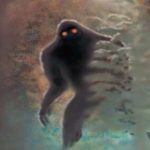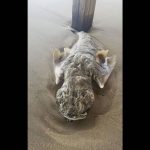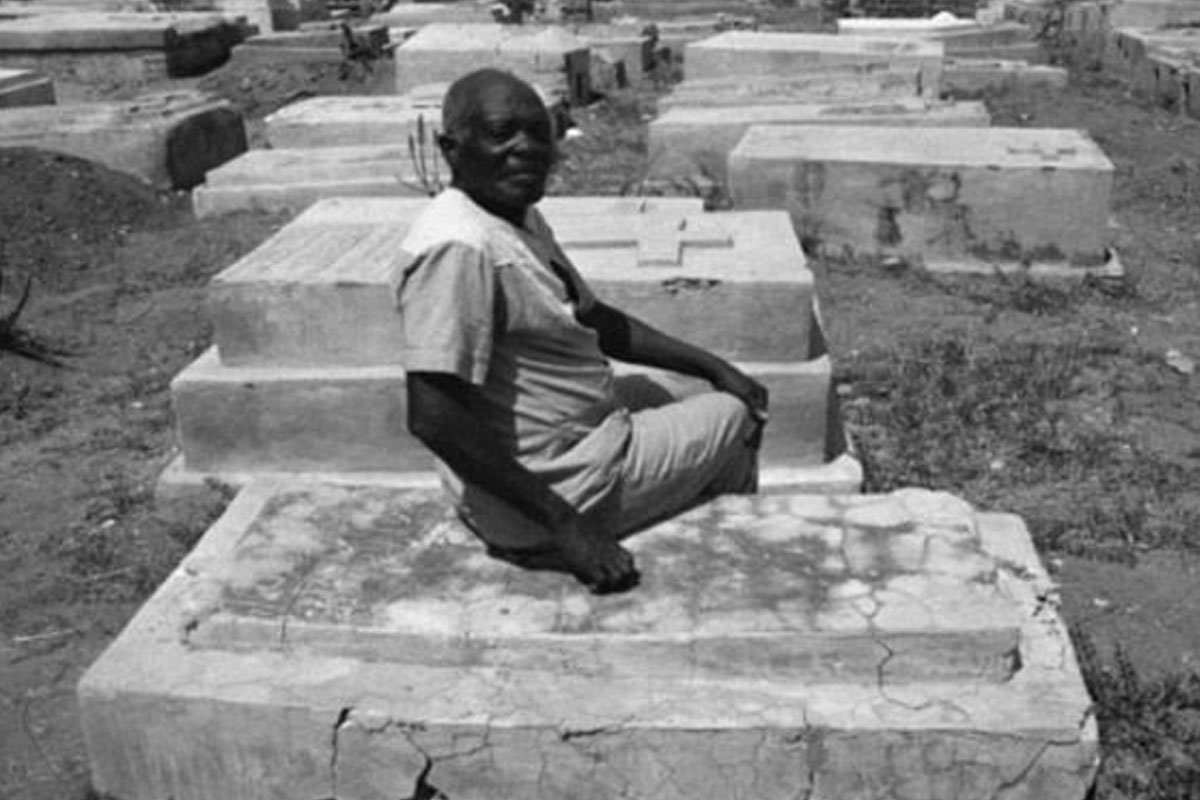
The strange case of Clairvius Narcisse, the real zombie
Brent Swancer April 30, 2021
Zombies have become a popular horror trope across film and fiction, and it seems that to most this must all be pure fantasy and fiction. Yet, in the country of Haiti, going back into the murky history of Voodoo there are persistent tales that such creatures are real. Reanimated by powerful priests called bokor, these people dwell in a limbo between life and death, undead automatons that only exist to serve the whims of their masters. The zombies of Haiti are greatly feared, much talked about, and while it might seem to be complete myth and folklore there have been cases that serve to show that they may actually be real to some extent.
On April 30, 1962, a man stumbled into the Albert Schweitzer Hospital, in the town of Deschapelle, of the Artibonite Valley of Haiti, spitting up blood and with a high fever. The man was soon identified as a local named Clairvius Narcisse, who told doctors that he had been suffering from various aches and general malaise for some time before recently coughing up blood. Even as he spoke with medical staff it could be seen that his condition was progressively getting worse, and it would be found that he also suffered from digestive disorders, pulmonary edema, hypothermia, respiratory difficulties, and hypotension, as well as tingling sensations throughout his body and a strange blue discoloration of his lips. Doctors could not pinpoint exactly what was wrong with him, but they did what they could to no avail. On May 2 he was found by nurses in his room dead. Attending physicians, including two American doctors, officially pronounced him dead and he was put into cold storage for a full 24 hours before being buried. These are the facts of Narcisse’s death, and are not in dispute. However, although he was buried, it does not seem that he would remain so.
 Nearly two decades later, in 1980, Clairvius’s sister, Angelina Narcisse, was in a marketplace in the village of l’Estere, when a man she did not recognize approached her out of the crowd. The man stumbled along as if drunk, and seemed to be in a sort of half-daze, but as she backed away from him thinking he was some sort of weirdo he muttered something that caught her off guard; a nickname that she had not been called for years and which only her immediate family knew. The man then came forth with the revelation that he was her brother Clairvius, long thought to have been dead, proving it through childhood memories that only the two of them had shared. How could this be? Angelina had wept by his bedside as doctors had declared him dead. She had watched him be lowered into the ground and buried, and had mourned him for years. Why was he suddenly wandering around this marketplace? Clairvuis’ answer to these questions would be quite the bizarre tale, indeed.
Nearly two decades later, in 1980, Clairvius’s sister, Angelina Narcisse, was in a marketplace in the village of l’Estere, when a man she did not recognize approached her out of the crowd. The man stumbled along as if drunk, and seemed to be in a sort of half-daze, but as she backed away from him thinking he was some sort of weirdo he muttered something that caught her off guard; a nickname that she had not been called for years and which only her immediate family knew. The man then came forth with the revelation that he was her brother Clairvius, long thought to have been dead, proving it through childhood memories that only the two of them had shared. How could this be? Angelina had wept by his bedside as doctors had declared him dead. She had watched him be lowered into the ground and buried, and had mourned him for years. Why was he suddenly wandering around this marketplace? Clairvuis’ answer to these questions would be quite the bizarre tale, indeed.
According to him, after he had “died” he had remained somewhat conscious, able to hear the doctors declare him dead, and he also remembered hearing Angelina crying at his bedside, but he had been unable to move or speak. He even remembered being buried, hearing the dirt shoveled over his coffin, yet unable to call out or even scream, lucid the whole time. When the dirt had finished raining down onto the wood, he said that he had felt the sensation of floating over the grave, and it was then that he would realize what was going on. After everyone had left and he was there in the earth alone, a Voodoo bokor had come out of the night with some followers, who dug him up, beat him senseless, tied him up, and ushered him away into the gloom.
He did not remember much after that, finally losing consciousness to gain the sweet release from this waking nightmare, and when he awoke, he was on a sugar plantation in the countryside, where he did not know. He then realized that he had been turned into a zombie, and that it had likely been ordered by his own brothers as punishment for refusing to sell them his land. On the plantation were others like him, all of them in the same sort of dazed, half-dream state, ambling about doing manual labor on the plantation. Clairvius remembered being in a constant trance, as if there was a fog in his mind, unable to remember exactly who he was, form clear thoughts, or to resist commands given to him by the bokor. After 2 years of mindlessly toiling away on the plantation in this stupor he had managed to escape when his bokor died, after which he wandered aimlessly around the countryside as memories of his former life slowly crept back to him. He eventually found himself in the market place and had run into his sister by sheer chance. When asked why he had not come back sooner, he explained that he had been sure that his brother was the one responsible for hiring the bokor to zombify him, and that he had been afraid to come home until his brother had passed away.
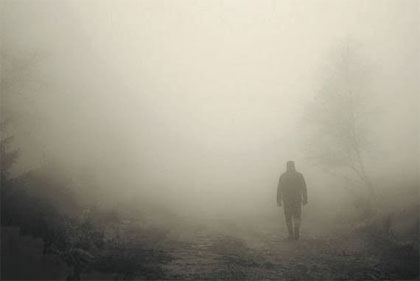 The case was puzzling because Clairvius had been officially declared dead and buried, this was undisputable, yet here he was walking around alive, so it was seen as strong evidence for the existence of real Voodoo zombies. When word got out about this bizarre case it attracted the attention of Haitian psychiatrist Lamarque Douyon, of the Centre de Psychiatric et Neurologie in Port-au-Prince, who reached out to colleagues in America to try to get someone to come out and investigate. Enter the ethnobotanist, anthropologist, explorer, and Harvard graduate student Wade Davis, who travelled to Haiti in 1982 at the behest of a Dr. Nathan S. Kline, who had heard of Narcisse’s case from Douyon. Kline believed the case to be the result of some as yet unknown and powerful drug, perhaps derived from some local plant, that could induce a zombie state. Kline wanted to gather samples of such drugs and analyze them for their potential medical applications, so it was hoped that Davis would be able to find the source of the drug and bring it back to the States so it could be studied.
The case was puzzling because Clairvius had been officially declared dead and buried, this was undisputable, yet here he was walking around alive, so it was seen as strong evidence for the existence of real Voodoo zombies. When word got out about this bizarre case it attracted the attention of Haitian psychiatrist Lamarque Douyon, of the Centre de Psychiatric et Neurologie in Port-au-Prince, who reached out to colleagues in America to try to get someone to come out and investigate. Enter the ethnobotanist, anthropologist, explorer, and Harvard graduate student Wade Davis, who travelled to Haiti in 1982 at the behest of a Dr. Nathan S. Kline, who had heard of Narcisse’s case from Douyon. Kline believed the case to be the result of some as yet unknown and powerful drug, perhaps derived from some local plant, that could induce a zombie state. Kline wanted to gather samples of such drugs and analyze them for their potential medical applications, so it was hoped that Davis would be able to find the source of the drug and bring it back to the States so it could be studied.
Davis agreed that there was most likely a pharmacological basis for the creation of zombies, and traveled to Haiti in 1982 to begin his investigation. Upon speaking to the locals, Davis at first heard only of zombies changed through black magic and sorcery by a bokor. There was no mention of any sort of drug used, and Davis, who eschewed such paranormal and mystical explanations, became discouraged. However, after further investigation Davis made the observation that bokors would routinely use special powders made from a complex mixture of ground up plant and animal parts in their rituals. Davis became convinced that these concoctions had some kind of pharmacological effects that were integral for the actual zombification of a victim.
Davis postulated that these “zombie powders” contained a powerful neurotoxin such as that derived from the puffer fish called tetrodotoxin. He theorized that the resulting toxic powder could then be delivered to the target in a variety of ways such as in their food, applied as a paste to skin, or even inhaled as an airborne dust. In non-lethal doses, tetrodotoxin produces paralysis and can induce a death-like state characterized by a low body temperature, extremely reduced rate of breathing, and a very slow and faint, almost imperceptible heartbeat. In such a state, the victim would appear to witnesses as dead and would then be buried. The victim would later awaken when the poison wore off and then be administered a drug made from the plant Datura stramonium, commonly called Jimsons Weed, or the “zombie cucumber,” which has potent psychotropic properties that would keep them in a delirious, trance-like state vulnerable to suggestion and mind control. Davis speculated that the zombie’s master would keep the victim in this suggestible, brainwashed state through regular infusions of a drug made from the mind-altering plant. In the case of Narcisse, Davis speculated that the man had slowly regained his mental faculties and lucidity only after the bokor’s death prevented his regular doses of the powerful drug.
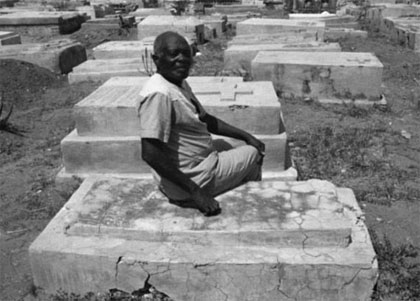 Clairvius Narcisse
Clairvius Narcisse
Davis scoured the voodoo underworld of Haiti and eventually collected 8 samples of these powders from several regions for analysis. When the powders were chemically analyzed, it was shown that among other bizarre ingredients such as dried toad, pieces of skull, and ground lizards and spiders, they indeed contained tetrodotoxin just as Davis had predicted. Furthermore, the powders induced states of lethargy and immobility when administered to laboratory monkeys that they were later able to recover from. Davis was widely touted at the time for being the man to finally offer up a rational, scientific explanation for the zombie mystery, and he later wrote two books about his travels and research called The Serpent and the Rainbow and Passage of Darkness.
In the ensuing years, Davis’ research came under fire by skeptics who questioned the scientific veracity of his claims and the validity of his methodology. It was pointed out that while the zombie powders did contain tetrodotoxin, the measurements were wildly inconsistent and there were only trace amounts of the toxin that were unlikely to cause the reported effects of zombification in full grown human adults. It was additionally asserted that this sort of toxin would have had to have been very specifically measured for each victim into a dose that would only work on a certain individual. Too much toxin and the victim would die, too little and there would be no effect. Skeptics doubted that bokor voodoo priests would be able to reliably account for this. There were also doubts that the story of Narcisse and other zombies were even genuine, with some calling the stories exaggerated or even complete fabrications. The complete lack of any evidence of the alleged zombie plantations didn’t help the case for the existence of zombies either.
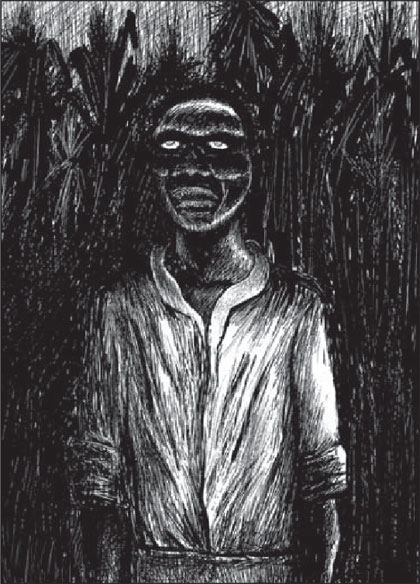 The skeptics fail to realize that the problem of exact amounts needed for the toxins to work are already represented in zombie lore. The victim was usually well known to the bokor before the process began, giving them time to brew the right dose of toxin into their powder. Even with that done, the creation of a zombie was said to be far from an exact science and bokor were known to fail just about as often as they succeeded, which could be an explained by the doses being wrong. Failure could mean death to the victim or no effect at all. Davis himself allegedly ingested some zombie powder on purpose, using himself as a guinea pig to see what would happen, but no effects were evident possibly simply because the dosage was all wrong.
The skeptics fail to realize that the problem of exact amounts needed for the toxins to work are already represented in zombie lore. The victim was usually well known to the bokor before the process began, giving them time to brew the right dose of toxin into their powder. Even with that done, the creation of a zombie was said to be far from an exact science and bokor were known to fail just about as often as they succeeded, which could be an explained by the doses being wrong. Failure could mean death to the victim or no effect at all. Davis himself allegedly ingested some zombie powder on purpose, using himself as a guinea pig to see what would happen, but no effects were evident possibly simply because the dosage was all wrong.
Davis for his part defended himself from many of the accusations hurled his way. He explained that while the powders may have shown only trace amounts of tetrodotoxin, they could have somehow worked in conjunction with the other myriad ingredients to produce the desired effects. Namely, Davis pointed to the inclusion of toad in the powders, and pointed out that the poison from some toads can act as an extremely powerful painkiller. Furthermore, Davis complained that the process of putting the powder in a solution for testing could have possibly nullified some of the potency of the active ingredient. It must also be remembered that there is the very real possibility that voodoo shamans might not be so willing to share ancient secrets with an outsider such as Davis, and consequently may have given him watered down versions of their powders cut with various superfluous and inert ingredients.
 Davis also explained that the tetrodotoxin was only part of the process and was only meant to make the victim appear dead, not actually make the zombie. It was only later after arising and being subjected to mind altering drugs that the victim could truly be considered a zombie. Davis described this by saying that the process involved first making the victim “dead,” for which tetrodotoxin is utilized, and then making them “mad,” through the use of psychotropic drugs such as Datura stramonium.
Davis also explained that the tetrodotoxin was only part of the process and was only meant to make the victim appear dead, not actually make the zombie. It was only later after arising and being subjected to mind altering drugs that the victim could truly be considered a zombie. Davis described this by saying that the process involved first making the victim “dead,” for which tetrodotoxin is utilized, and then making them “mad,” through the use of psychotropic drugs such as Datura stramonium.
Davis continued to maintain that tetrodotoxin in zombie powders could conceivably cause the initial death-like state from which a victim could later be revived. To support this opinion, he points to research from Japan, where puffer fish is a popular delicacy, on the effects of the fish’s tetrodotoxin which concurs with the death-like states that Davis describes. It was reported that in Japan there were rare cases of people falling into a death-like coma after consuming puffer fish, only to regain consciousness and completely recover after being declared dead. Davis also added that the process of zombification went deeper than the mere use of powders and poisons. He explained that toxic powders were only part of the equation, and that the process also relied on the deep-rooted belief of the Haitian people that black magic and voodoo are real. Davis argued that this deep seated, ingrained belief would make potential victims more suggestible and vulnerable to the effects of zombification.
There have been many other supposed real zombies studied over the years, but the case of Clairvius Narcisse remains the most well-documented and supported by actual evidence. It is known that he was declared dead and buried, and it is known that he is really who he says he is, not some sort of identity thief and hoaxer. What is not known is how he managed to turn up alive in that marketplace or whether any of his story about being a zombie slave on a sugar plantation is true. If it is true, then how are we to explain it? Is this due to black magic or is it as Davis said, in that this was some sort of powder that had made him appear dead, after which he was kept under control with mind-altering substances? No one really knows, and it remains a bizarre case that inspires debate and eludes any real answers.
MU


















